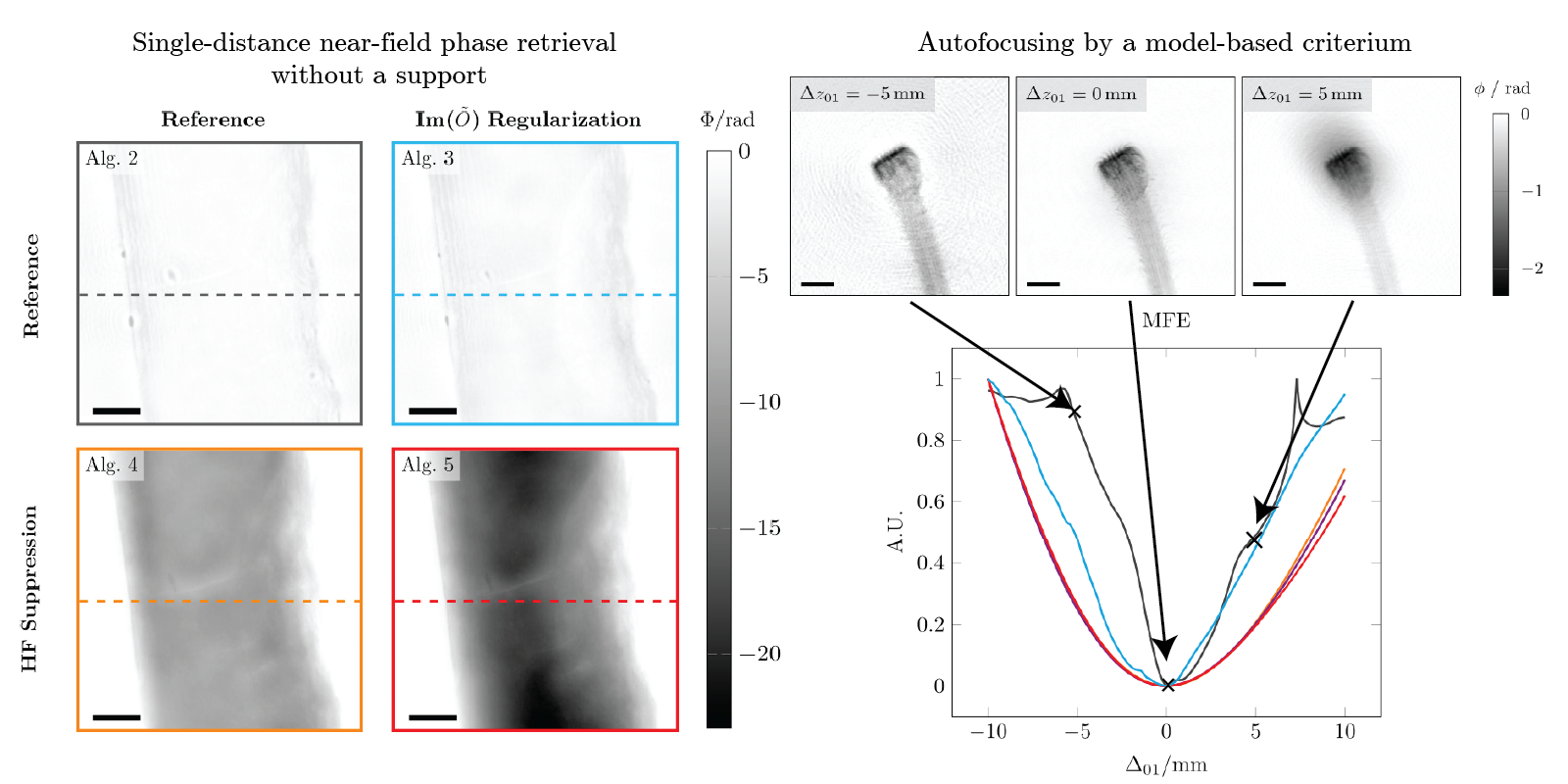Published on 18.02.2025
Advances in Holographic Image Reconstruction

This blog post was originally published on CONNECT, and provides an update on the activities of the SmartPhase project, one of our Helmholtz Imaging Projects.
In the world of coherent lens-less microscopic imaging, one of the most persistent challenges is the phase problem—where only the intensity of a complex wave field is captured by detectors, while critical phase information is lost. This makes it difficult to accurately reconstruct sharp and artifact-free images from holograms. Researchers have long sought effective solutions, often relying on multiple data acquisitions under varying conditions or imposing strong constraints such as spatial support. However, such methods are impractical for time-sensitive in situ and operando measurements, particularly for in-situ measurements, e.g. for the in-situ study of the degradation behavior of Mg implants
Two recent advancements in phase retrieval offer promising solutions to this issue, addressing both the artifact reduction in single-hologram reconstructions and the critical autofocus problem. Both approaches have been demonstrated on experimental data obtained at the nano imaging endstation of P05 at PETRA III (DESY, Hamburg), operated by Helmholtz-Zentrum Hereon.
A Novel Reconstruction Scheme with Projected Gradient Descent
A new approach utilizing projected gradient descent (PGD) offers a significant breakthrough for single-hologram reconstructions without the need for a spatial support constraint. Traditional methods either require multiple measurements or rely heavily on prior constraints, which are not feasible in many real-world applications. By incorporating proper preprocessing and regularization, the PGD-based method substantially reduces artifacts in refractive reconstructions, enabling high-quality image retrieval from a single dataset. This advancement paves the way for more robust and efficient phase retrieval in time-sensitive experimental setups.
Autofocusing via Model Matching for Enhanced Accuracy
Another critical factor in achieving high-resolution reconstructions is solving the autofocus problem—ensuring that the correct Fresnel number is estimated for the forward model. A simple distance measurement during an experiment is often not precise enough, leading to blurred or artifact-ridden images. Traditionally, autofocusing relies on image analysis-based criteria, which can be sensitive to noise and neglect the nuances of the phase retrieval algorithm itself.
A newly proposed method enhances autofocus accuracy by using a model-matching approach that takes into account the reconstruction algorithm, the forward model, and the measured hologram. By integrating a common autofocusing framework with a downhill-simplex optimization method, this approach ensures precise fine-tuning of the Fresnel number, leading to sharper and more reliable image reconstructions.
Conclusion
These advancements mark a significant step forward in addressing the phase problem in holographic imaging. The combination of PGD-based reconstruction and a robust autofocus framework provides a powerful toolkit for researchers working with X-ray near-field holography. As these techniques continue to be refined, they hold great potential for improving imaging quality in a wide range of scientific and industrial applications.
Authors: Johannes Hagemann, Johannes Dora, André Lopes Marinho, Ritz Aguilar, Jeffrey Keiling, Ingo Manke, André Hilger, Markus Osenberg, Imke Greving, Silja Flenner & Berit Zeller-Plumhof
Visit CONNECT to connect with the SmartPhase Project Partners